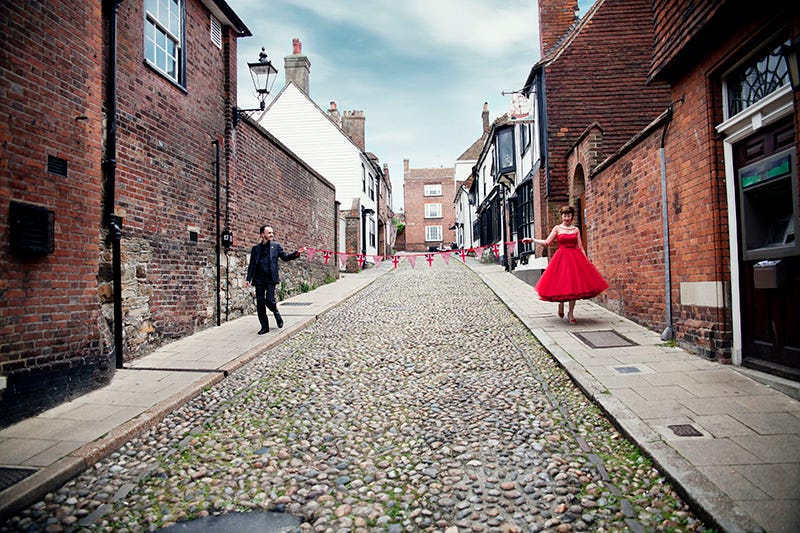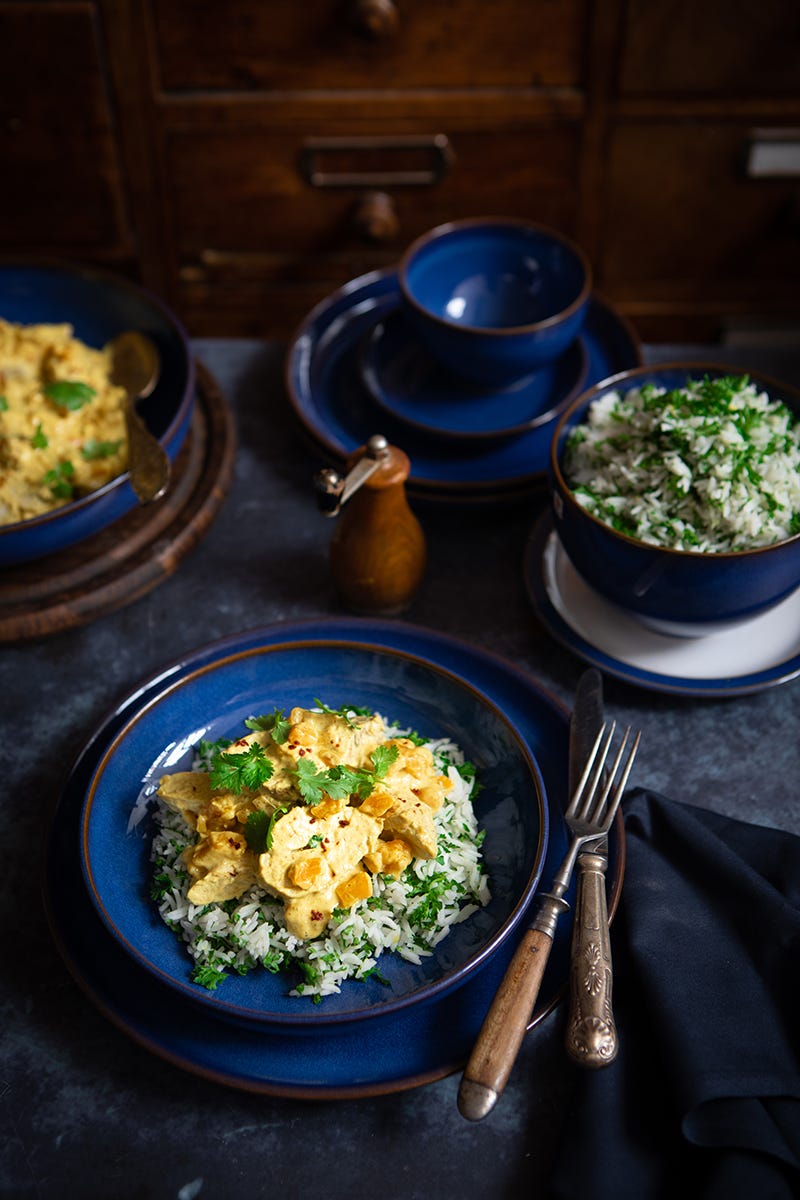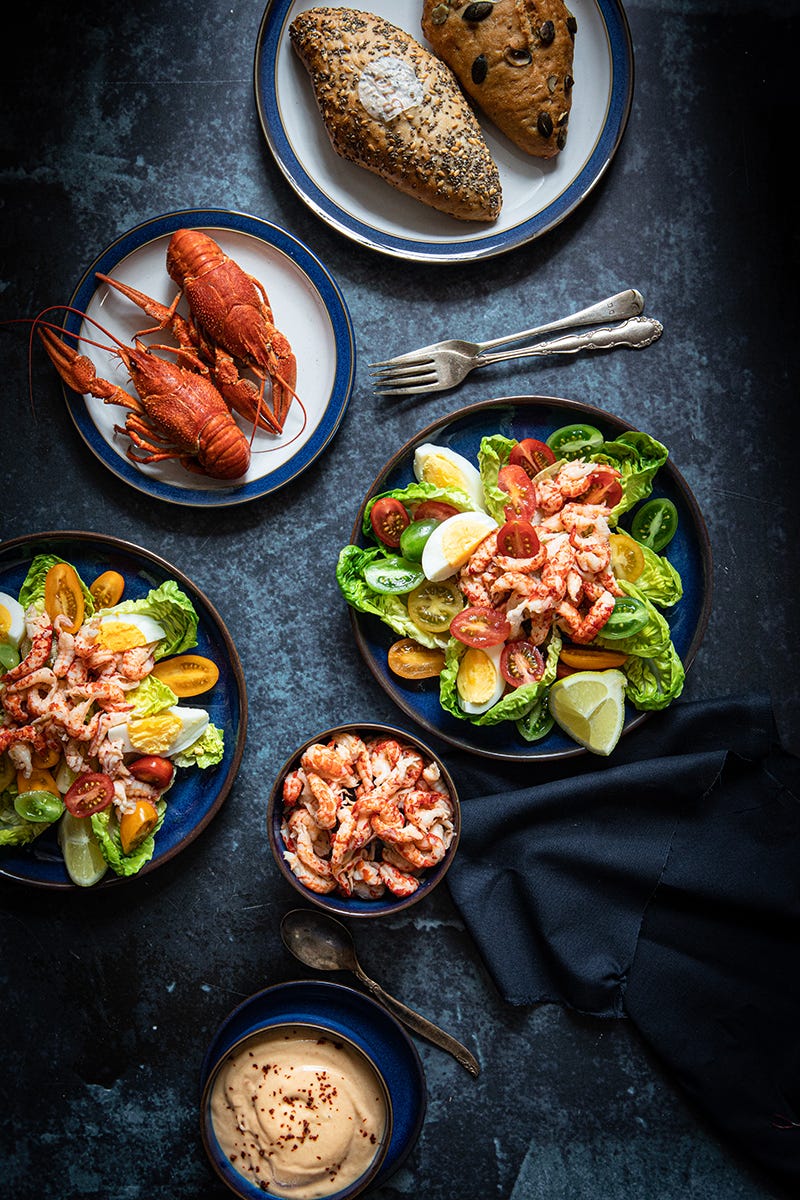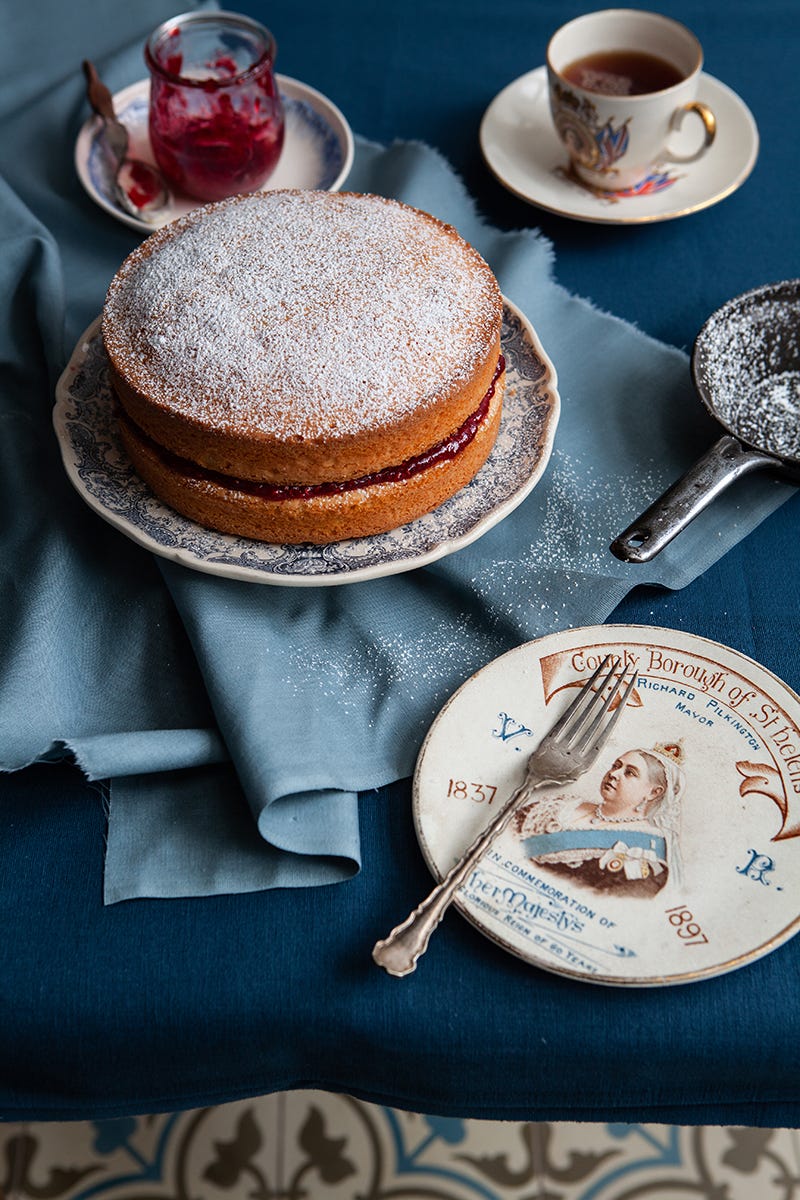Although I am still mourning the loss of the Queen, I thought there’s always an excuse for a party and what better excuse than a coronation. Now I’m not a royalist by far, but one must admit this weekend’s happenings are historical. It were a big few years for history, that’s for sure.
Last year I was a member of the judging panel for the Queen’s Platinum Jubilee Pudding competition that was broadcasted on the BBC. The competition was open to all British citizens and received a massive response. The dish that won was a Lemon and Amaretti Trifle which was exciting because Trifle is a historical dish in Britain that dates back centuries. (You can read all about that in my book Pride and Pudding) When Mary Berry, Monica Galetti and I tasted it we looked at each other and we knew, this was it. And a Trifle, a humble Trifle, rocketed back into today and the future.
This year the royal household decided to to select the Coronation dish themselves and the dish was developed by the royal chef. Apart from HRH Charles and Camilla, no one had a say. The result was announced a few weeks back: a quiche. Very British? I think not.
Fast forward to this week French food experts have said the Coronation quiche is not actually a quiche but… a tart.
Speaking to The Times, Évelyne Muller-Dervaux, who is known as the grand master of the Brotherhood of the Quiche Lorraine, said: 'I think I would call it a savoury tart.' Another member of the Brotherhood of the Quiche Lorraine, Laurent Miltgen-Delinchamp, agreed: 'I think it would have anyway better reflected the British spirit if they had called it a tart.' I agree.
But mostly I don’t think the Coronation “Quiche” is very festive. Felicity Cloake tested the recipe in The Guardian . She found it more a Spinach tart and found some faults in the recipe. Firstly it uses lard in the pastry without giving an alternative, which means Muslims and Vegans can’t make this pastry. She also found that unless if you are experienced at tart erghh quiche making you better make double the pastry. The recipe omits drying out the blind-baked pastry shell and the finished tart erghh quiche needs a bit more time in the oven than the recipe suggests.
Other than that, it’s a tart erghh quiche I would definitely make on a weekday (apart from the broad beans because who can get broad beans right now? I’ve not found them anywhere, not even at the farm) but not on a party occasion.
Coronation chicken will always be a favourite, but maybe you want to use the abundance of crayfish instead. For dessert there has to be Victoria Sponge!
If you want to learn more about British food here is a gentle reminder that I have published several books on the matter, here are my favourite two:
Pride and Pudding: about British puddings savoury and sweet
Oats in the North, Wheat from the South: about British baking savoury and sweet
Scroll down for the recipes!
Coronation Chicken
When one says Coronation food one immediately thinks of Coronation Chicken - if you are British anyway - but many of my readers aren’t British so let me explain what the fuss is all about.
The recipe was originally named "Poulet Reine Elizabeth". It was created by Constance Spry and Rosemary Hume from Le Cordon Bleu London to be served at the Coronation Luncheon in 1953. The dish was inspired by Jubilee chicken, a dish prepared for the silver jubilee of George V in 1935. While Jubilee chicken was rather plain, Coronation chicken was jazzed up by spices and later almond slivers and raisins. Surprisingly, mayonnaise is an important ingredient!
Coronation chicken might bring up memories of chicken and mayonnaise in a train station sandwich (if you are British) but when tweaked slightly this recipe becomes an elegant curry to serve warm. There’s still mayonnaise but it’s taken over mostly by yoghurt to become a sweet and mildly spiced dish with fruity notes of the apricot. Using a whole chicken instead of fillets is a sustainable choice.
Recipe
Serves 4 as a main dish
For the chicken
1 organic chicken
1 carrot
1 stick of celery
a few sprigs of parsley and thyme
1 bay leaf
1 cinnamon stick
10 peppercorns
1 tsp of madras curry
For the sauce
1 medium onion, chopped
2 tbsp of madras curry powder
1 clove of garlic,chopped
100 dried apricots, chopped
1 tbsp of mango chutney
1/2 tsp saffron threads, crushed
125 ml white wine
125 ml water
120 g Yoghurt
50 g Mayonnaise
Chilli or Aleppo pepper
Oil for frying
To serve
A few coriander sprigs
Cooked rice for 4
4 cups of chopped curly parsley
Zest of 1 small lemon
Method
Put the chicken breast side up in a large casserole and add the carrot, celery, parsley, thyme and bay and peppercorns. Cover with water until the top of the breast is not covered and simmer for about 1 hour or until the juices run clear. Allow the chicken to cool in the liquid before pulling the meat off the bone.
When the chicken is taken off the bone and cut into large bite-sized pieces prepare the sauce.
Chop the apricots into small pieces. Soften the onion and garlic in oil, stirring in the madras curry powder to let it toast. Then add the chutney and the apricots and the saffron, stir to caramelise just briefly and deglaze with half the white wine and water. Bring it to a boil then turn the heat down and season with salt to taste. Let the mixture simmer to reduce for 5 minutes then add the rest of the wine and water and simmer to reduce.
Cook the rice according to the packet instructions and mix with the chopped parsley and lemon zest.
Combine the yoghurt and mayonnaise. Let the sauce rest for 5 minutes, it will look sticky not watery then stir in the yoghurt and mayonnaise mixture. Taste, season with chilli powder or Aleppo pepper to taste. It should be mildly spicy, not blow your socks off.
Add the pieces of chicken and turn them in the sauce so they are nicely coated. Now serve warm with cooked rice and a few sprigs of coriander on top.
Crayfish cocktail salad
Crayfish are an invasive species in British waters which means we should be eating them to save the native species. Therefore they are an excellent more sustainable option for a classic shrimp cocktail. They aren’t just a more conscious choice, you will also impress your guests because crayfish are the little cousins of the lobster and delicious. The retro Marie Rose sauce is best friends with shrimp, prawns and crayfish so I wouldn’t want any other sauce with it.
Serves four as a starter or a lunch with ample bread
What you need
375 shelled crayfish meat
4 hard boiled eggs, peeled
400 g multi-coloured cherry tomatoes
6 heads of baby lettuce
1 lemon, quartered
Marie Rose Sauce
5 tbsp mayonnaise
1 tbsp ketchup
1 tl whisky (optional)
A sprinkle Aleppo pepper (or black)
To serve
Bread
Method
Take apart the little lettuce and rinse the leaves. Rinse then quarter or halve the cherry tomatoes.
Make the Marie Rose sauce by spooning the mayonnaise, the ketchup and the whisky (optional) into a bowl, stir to combine, transfer to a serving bowl and top with the Aleppo pepper, its red colour compliments the colour of the sauce.
Arrange the lettuce leaves, the tomatoes and the eggs over the plates, top with the crayfish, sprinkle some Aleppo pepper and serve with the Marie Rose sauce. Place a lemon quarter on each plate and serve with bread.
Victoria Sponge Cake
(recipe from my book Oats in the North Wheat from the South)
The first version of this cake was made in small, individual, elongated cakes similar to the sandwiches that were served for an afternoon tea. In The Modern Baker, Confectioner and Caterer from 1907, John Kirkland gives different versions for cakes such as coffee and walnut, but the Victoria sandwich with raspberry or strawberry jam and/or cream is the most popular. Traditionally, for this cake, the eggs are first weighed in their shells and then the same weight of butter, sugar, and flour is used.
For 6–8 people
4 eggs
1 cup (250 g) butter, approximately, at room temperature
2 cups (250 g) plain white flour, approximately
1¼ cups (250 g) granulated white sugar, approximately
1 Tbsp milk
2 tsp baking powder
2–3 Tbsp raspberry or strawberry jam
butter, for greasing
flour, for dusting
confectioners’ sugar, for dusting
Method
For two round 7- to 8-inch loose-based cake tins
Preheat your oven to 350°F and prepare the cake tins (see page 21).
Weigh the eggs in their shell, then measure out the same weight of butter, flour, and sugar.
Put the eggs in a large mixing bowl. Add the butter, sugar, milk, flour, and baking powder. Mix the batter until it is smooth.
Divide the batter between the two cake tins and smooth the tops. Tap the tins on the bench to remove any air bubbles. Bake in the middle of the oven for 20–25 minutes. Leave in the tins for 5 minutes, then remove from the tins and let cool on a wire rack.
When the cakes have cooled, cover one cake with the jam and place the second cake on top. Sprinkle with confectioners’ sugar.
For a richer version, cover the bottom cake with whipped cream (with at least 40% fat) in addition to the jam. In summer, it’s also very nice to add slices of fresh strawberries to the filling and on top.








